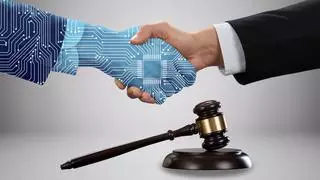Artificial intelligence or AI-integrated business operation is shaking up the norms of industries and the rules of competition globally. The emergence of big data and AI has contributed to the unprecedented growth of tech giants such as Amazon, Google, and Meta.
In all these enterprises, the value the end-consumer receives is provided by algorithms.
While it may be true that engineers and developers create the AI’s software engine to implement the algorithms, ultimately, however, the value generation happens through digital automation. The recent wave of the AI boom has changed competitive dynamics in a manner that is difficult to predict. While Indian lawmakers mull over a revamp of the existing competition law framework, the integration of AI has introduced challenges, which need to be addressed.
In competition law, the adverse effects of AI can be categorised into three groups: use of AI to carry out agreements or strategies that are anti-competitive; implementation of specific anti-competitive strategies by AI without explicit human guidance; and use of AI that coincides with a decrease in competitive intensity without explicit evidence of anti-competitive agreements or strategies.
Collusion is anti-competitive behaviour, which refers to cooperation or agreement between rival businesses to increase profits above the non-cooperative equilibrium.
Pricing power
Extensive use of AI can create conditions that make collusive outcomes more predictable or lucrative. For instance, consumer data, rival offers, and market transactions are openly available metrics that can be used in AI applications. Collusion is better facilitated when there is a high level of market transparency, since information about competitor prices or transactions are readily available.
In contrast to these worries, AI may also result in more competition in some markets. For instance, AI may become a critical differentiator between businesses in terms of how rapidly they react to market shifts, how precisely they forecast and understand data, and how they use AI to create better, more affordable products. Depending on how they are designed, profit-maximisation algorithms may even prevent markets from acting in a way that is collusive. This scenario of AI fostering rivalry shows that AI could also promote competition.
However, there is a thin line between an enterprise being competitive and abusing its market dominance. AI can make it simpler for powerful companies to use anti-competitive tactics like price discrimination or predatory pricing, which can eliminate smaller rivals. Businesses may deploy AI to analyse a rising amount of consumer and demographic data, enabling them to set prices that are based not just on general consumer groups but also, in certain situations, on a consumer’s estimated willingness to pay. This is known as personalised pricing.
Consumer protection
The complexity of AI algorithms may make it tricky to determine whether a company is indulging in abusive activity, which, in turn, may make it difficult to enforce existing competition law. Therefore, regulators must remain alert to the possibility of abuse of market dominance facilitated by AI and take steps to prevent it.
Globally, policymakers’ assessment of AI’s impact on competitive dynamics is still in the early stages and mainly theoretical. AI bears significant pro-competitive potential by facilitating more effective decision-making, and new goods and services, and may even weaken collusive outcomes in some instances. At the same time, there may be risks to competition if AI makes markets predictable, transparent, and stagnant or if it encourages the adoption of techniques that drive out competitors. More generally, AI raises issues that are not easily addressed by competition law and will require corrective action from consumer protection authorities and policymakers.
The dangers of anti-competitive action can be managed through meticulous merger control, market research to find pro-competitive policies (including those aiding consumer information and decision-making), advocacy, and cooperation with other regulators. Additional legal measures may be needed to address the full range of competition issues, and the authorities will need technical resources and expertise to comprehend how AI operates in markets.
In conclusion, it is too soon to judge whether AI will live up to its promise of facilitating pro-competitive consumer gains or harm competition. The management of the possible adverse effects of AI technology on consumers, smaller enterprises, and the economy at large will undoubtedly rely on competition regulation. This will require coordination across regulatory and policy disciplines, ensuring regulators have the means to enforce competition policy, and ensuring that regulatory frameworks enable innovation and pro-competitive AI applications.
(The writers are advocates at Trinity Chambers, Delhi)








Comments
Comments have to be in English, and in full sentences. They cannot be abusive or personal. Please abide by our community guidelines for posting your comments.
We have migrated to a new commenting platform. If you are already a registered user of TheHindu Businessline and logged in, you may continue to engage with our articles. If you do not have an account please register and login to post comments. Users can access their older comments by logging into their accounts on Vuukle.